Basic knowledge about complete overhauling or renewing bearings at Spicer rear axles
Volvo PV, 121, P1800
30.11.2021With a correctly overhauled rear axle the Volvo classic car is even more fun. Rear axles with running noises like "grinding", "whining", "howling", "clacking" are mechanically defective or worn. In this document you will find basic knowledge about about complete overhauling or renewing bearings at Spicer rear axles
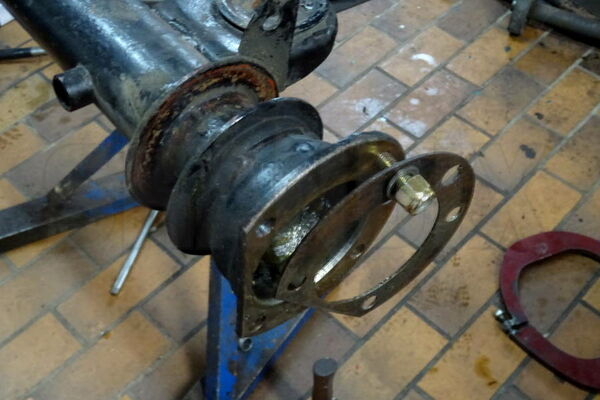
When overhauling the differential bearing, it is essential to observe the installation instructions in the workshop manuals.
While the wheel bearing in the axle tubes (see separate installation instructions) can still be replaced and adjusted with comparatively simple tools, the calibration and replacement of the differential bearings, on the other hand, requires a lot of knowledge and many special tools.
Also the contact pattern and the backlash must be adjusted exactly, otherwise the bearings or even the gears can be damaged again quite quickly.
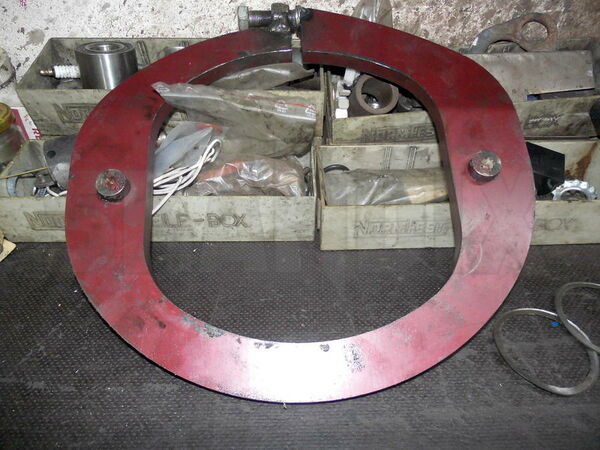
In order to get the pinion and crown wheel set out, the whole axle housing is spread out because it is inserted with exact preload. This requires the spreading device shown here in the picture.
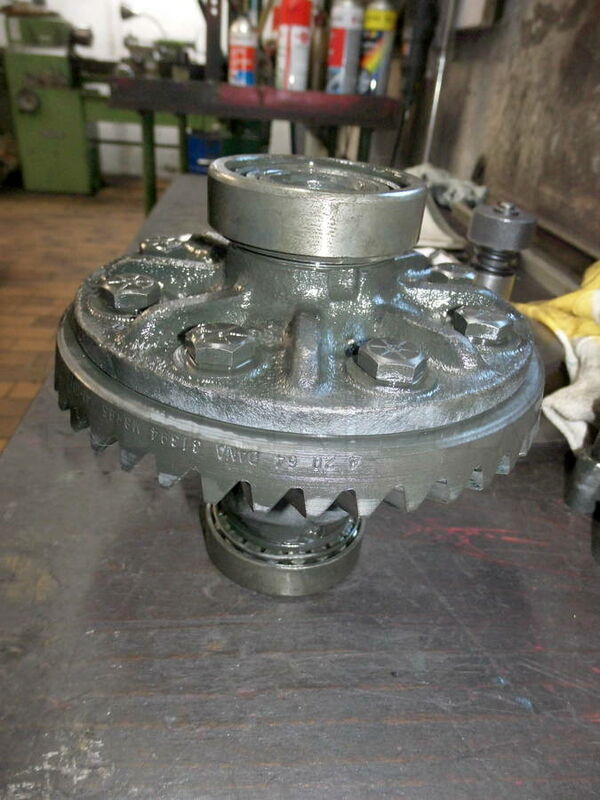
When the crown wheel set is dismantled, the bearings are dismantled using a special puller, checked and replaced after calibration.
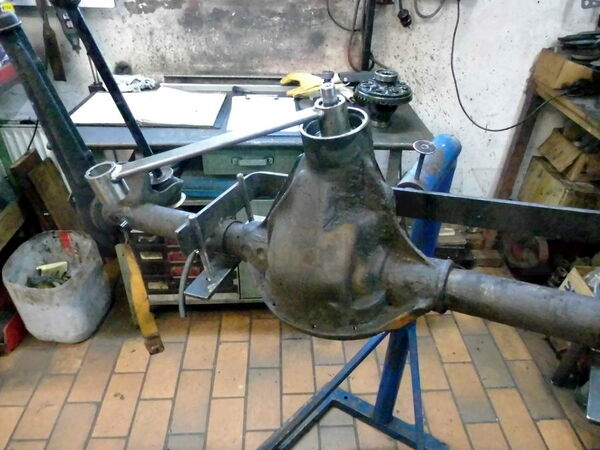
Here in the picture you can see the bevel gear mounted for checking the bearing clearance, with the attached Volvo 2404 mounting tool, which is among other things necessary for mounting the input bearing.

Here the also needed tools Volvo 2393 and 2284 (with dial gauge) to adjust the bevel gear bearing.
The dial gauge holder 2284 is also used in other places, e.g. for determining the necessary adjustment discs for the bearings of the crown wheel set.
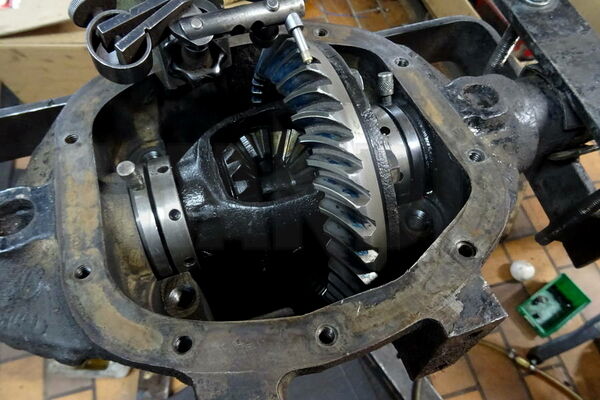
Here in the picture, the differential with the necessary adjusting discs is used instead of the bearings. This is done to determine the necessary spacers.
The contact pattern and tooth flank clearance are adjusted with the aid of the adjusting washers. From these the height difference to the bearing is then determined on a measuring device.
Then a certain preload is added and the differential is used. Afterwards the check is carried out again.
A dial gauge on the ring gear scans the tooth flank backlash in the picture.
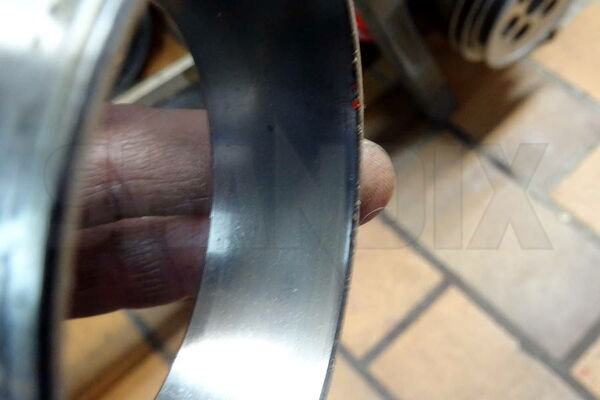
If the pre-tension of the bevel and crown wheel set is not correctly adjusted, at least bearing damage will occur again relatively quickly.
Here in the picture such a run-in bearing shell from the rear bevel gear bearing, which was probably installed with too high preload. It was to be heard clearly.
Here the preload is adjusted with the spacers and the contact pattern, which varies with the installation depth of the bevel gear.
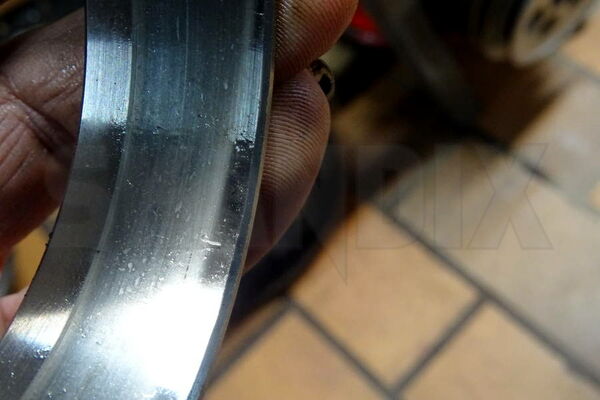
Here the bearing shell of a crown wheel set, which was inserted into the housing with too high a preload. It had run in again after a short time and was also clearly audible. The damage has nothing to do with the quality of the bearings, but only with improper repair. The bearing itself is rather oversized.
In order to do this work correctly, some special tools and measuring instruments are necessary. Not to mention the poor availability of the original tools, the purchase of a complete set for a single overhaul would hardly be worth it compared to a workshop job. An original workshop manual is also absolutely necessary.
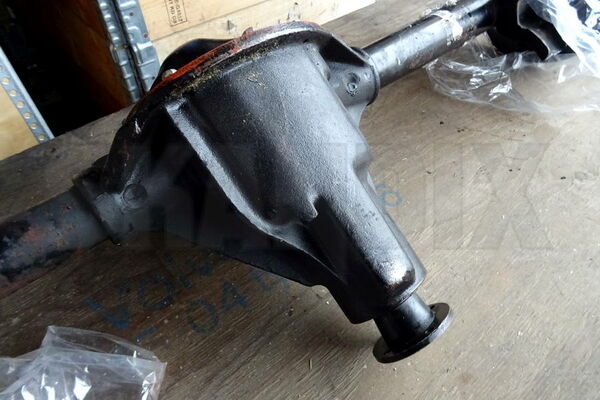
With such work, however, you should thoroughly question in advance whether you can do this on your own. It requires a lot of expertise, precise work and considerable investment in special tools. And in case of doubt it can go wrong thoroughly, for which neither the spare parts nor the axle itself are responsible.
- All notes serve only as an example and do not replace the workshop instructions of the automobile manufacturers! All information is supplied without guarantee!